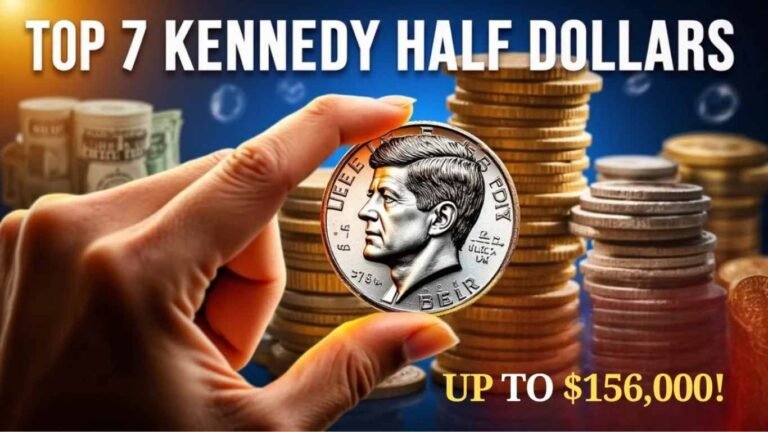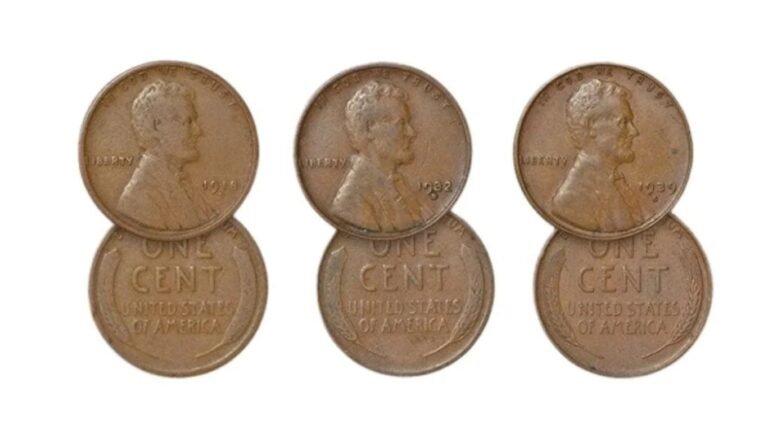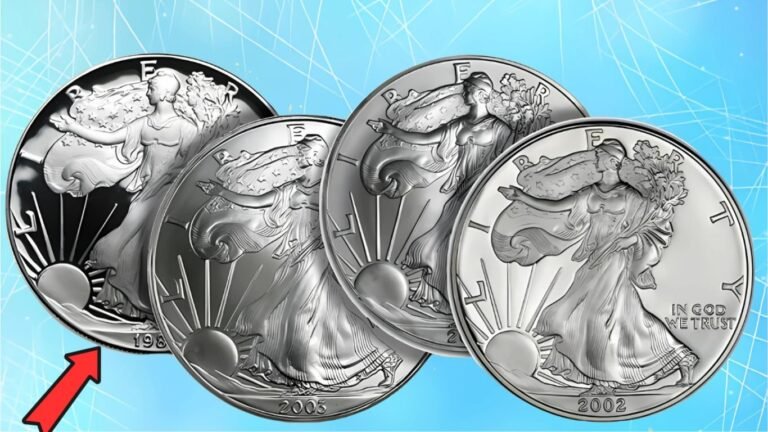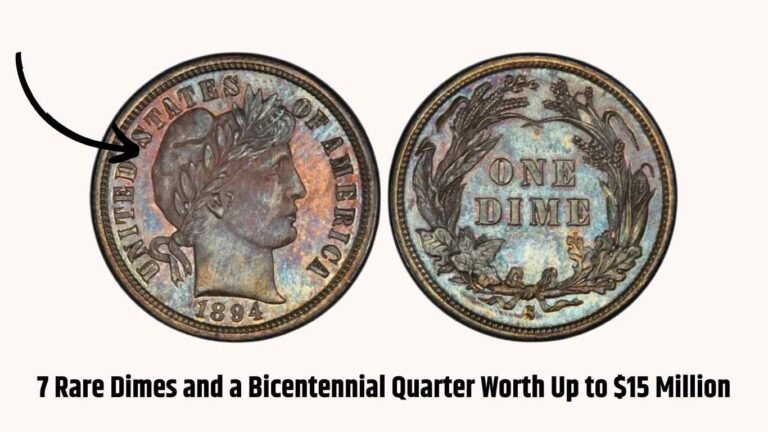The Rarest Lincoln Wheat Pennies Worth Up to $1.5 Million – A Collector’s Guide
Lincoln Wheat Pennies, produced between 1909 and 1958, have become iconic in American numismatics. While most of these coins are relatively ordinary and worth just a penny, there are some rare and historical specimens that have fetched extraordinary prices in the market. These rare pennies are often sought after by collectors and enthusiasts, with some selling for prices up to $1.5 million.
In this guide, we’ll delve into the world of valuable Lincoln Wheat Pennies, explore how to identify them, and highlight a few particularly rare examples that could be hiding in your collection.
Why Are Some Lincoln Wheat Pennies So Valuable?
The majority of Lincoln Wheat Pennies are not worth more than their face value, but a select few are considered valuable due to rarity, errors during production, or historical significance. These coins are often sought by collectors because they have a compelling backstory or an exceptional feature that sets them apart from the rest.
Notable Examples of Rare Lincoln Wheat Pennies
1943 Copper Lincoln Wheat Penny
Perhaps the most famous of the rare Lincoln Wheat Pennies is the 1943 Copper Penny. In 1943, due to World War II and the need to conserve copper for military purposes, the U.S. Mint switched to producing pennies using zinc-coated steel. However, a few copper planchets (the metal discs used to strike coins) were accidentally used in the production of pennies that year. These “1943 Copper Pennies” are among the rarest and most valuable coins in existence.
Some have sold for jaw-dropping prices at auctions, such as:
- $840,000 for a 1943-D Copper Penny graded MS64BN in 2021.
- $504,000 for a 1943-S Copper Penny.
Because of the rarity of these coins and the fascinating error in their production, 1943 Copper Lincoln Wheat Pennies are highly coveted by collectors.
How to Identify a 1943 Copper Penny
If you believe you may have a 1943 Copper Penny, here are a few steps you can take to verify its authenticity:
- Check the Date: The penny should clearly be dated 1943.
- Magnet Test: Copper is non-magnetic, while steel is magnetic. If the penny sticks to a magnet, it’s likely made of steel. If it doesn’t, it may be copper.
- Weigh the Coin: A copper penny weighs approximately 3.11 grams, while a steel penny weighs only around 2.7 grams.
- Professional Authentication: Given the prevalence of counterfeit coins, having your penny authenticated by a reputable grading service such as PCGS or NGC is crucial for confirming its value.
Other Rare Lincoln Wheat Pennies to Look For
While the 1943 Copper Penny often steals the spotlight, there are several other rare and valuable Lincoln Wheat Pennies that are worth noting:
- 1909-S VDB Penny
The 1909-S VDB is one of the most coveted Lincoln Wheat Pennies. This coin features the designer’s initials (V.D.B.) on the reverse, which were removed after public outcry. Only 484,000 of these pennies were minted, making them scarce. A red version of this penny has been sold for as much as $168,000 at auction. - 1955 Double Die Obverse Penny
The 1955 Double Die Obverse Penny is known for a significant error in which the date and other inscriptions were doubled due to an engraving error. Depending on its condition, these pennies can sell for anywhere from $1,000 to $15,000. - 1944 Steel Penny
In 1944, the U.S. Mint returned to copper for penny production, but a few leftover steel planchets from 1943 were used to strike pennies. These steel pennies are rare, with one 1944-S Steel Penny fetching a record $373,750 at auction. - 1922 No D Penny
The 1922 No D Penny is another rare coin caused by a minting error. Due to a filled die at the Denver Mint, the “D” mint mark was not stamped on some pennies. High-grade examples of the 1922 No D Penny have sold for up to $90,000. - 1958 Double Die Obverse Penny
The 1958 Double Die Obverse Penny is a rare example of a double die error. Only a few examples exist, and one of these pennies sold for a remarkable $336,000 at auction.
Why Do These Rare Pennies Hold Such Value?
The value of these rare Lincoln Wheat Pennies can be attributed to several factors:
- Scarcity: Many of these pennies were either minted in limited quantities or were the result of errors during production, making them difficult to find.
- Historical Significance: Some of these pennies, like the 1943 Copper Penny, have a compelling historical backstory that adds to their appeal.
- Demand from Collectors: The rarity of these coins combined with high demand from collectors and investors drives up their value.
What Makes a Lincoln Wheat Penny Valuable?
Several factors determine the value of a Lincoln Wheat Penny. These include:
- Mintage: Coins that were minted in low quantities are generally more valuable.
- Errors: Pennies with minting errors, like double dies, off-center strikes, or missing mint marks, are often worth more.
- Condition: Coins that are in better condition (graded by professional grading services) tend to fetch higher prices.
- Historical Significance: Coins with unique or significant historical context, like the 1943 Copper Penny, often carry a premium.
How to Safeguard Your Rare Pennies
If you think you may have one of these rare Lincoln Wheat Pennies, it’s essential to take steps to preserve their value:
- Store Properly: Use acid-free holders or containers to keep your coins in good condition.
- Avoid Cleaning: Never clean your coins, as doing so can significantly reduce their value.
- Get Professional Grading: For high-value coins, get them professionally graded and authenticated to ensure you’re getting the true value.
At Last: Keep an Eye Out for Valuable Lincoln Wheat Pennies
Although the chances of finding a $1.5 million Lincoln Wheat Penny in your collection are slim, it’s not impossible. Coins like the 1943 Copper Penny, 1909-S VDB Penny, and others have proven that rare and valuable specimens do exist. Regularly checking your pennies and learning to identify these key features could lead to a significant windfall.
So, the next time you’re going through your spare change, keep an eye out for these rare pennies—they could be worth more than you think!






